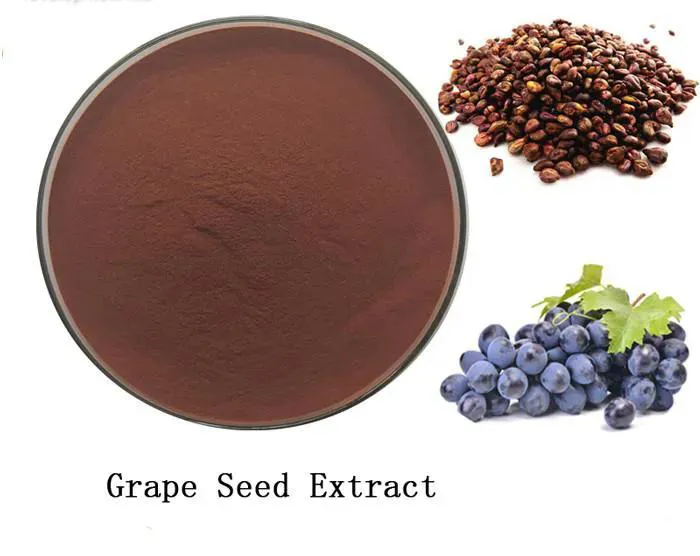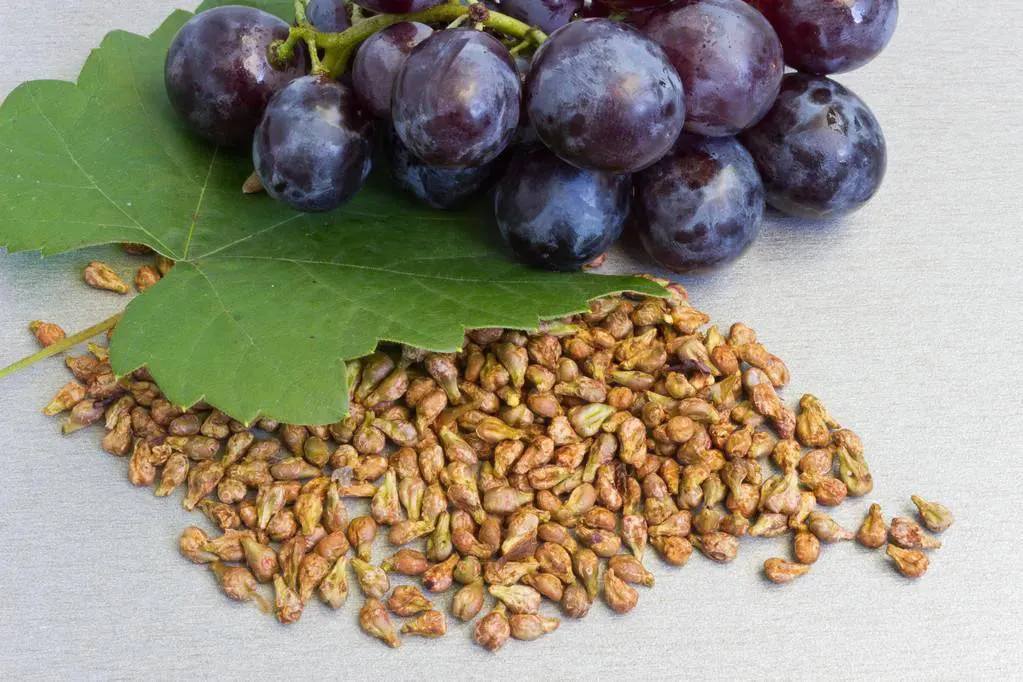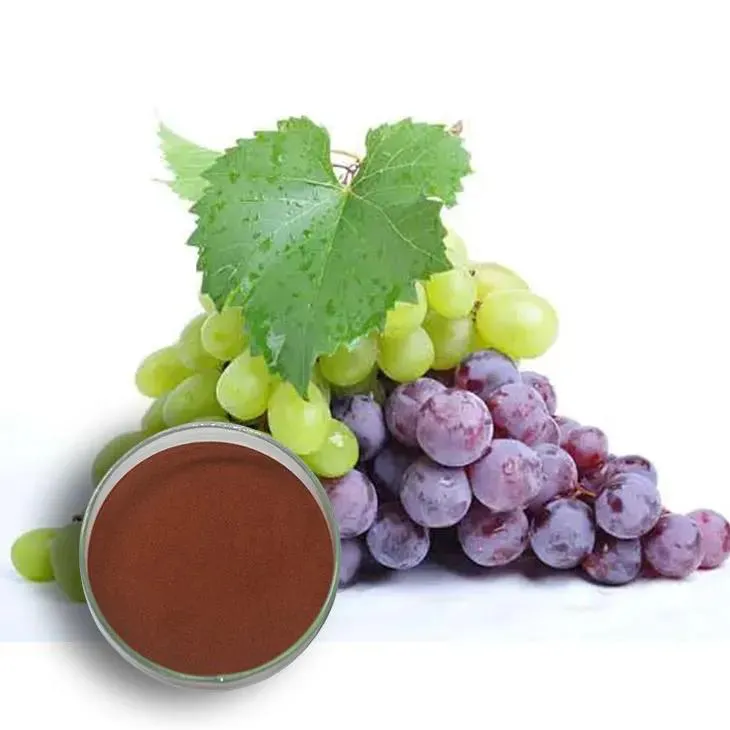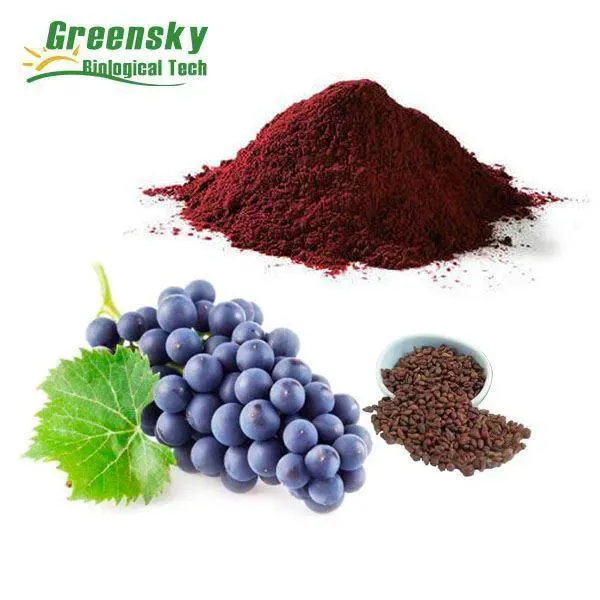- 0086-571-85302990
- sales@greenskybio.com
The Science Behind Grape Seed Extract: Unveiling Its Health Benefits and Potential Uses
2024-08-20

Introduction
Grape Seed Extract has been gaining significant attention in the world of health and wellness in recent years. It is a natural substance that is rich in various bioactive compounds, which have been the subject of numerous scientific studies. This extract is derived from the seeds of grapes, a fruit that has been cultivated for thousands of years and is known for its many health - promoting properties. In this article, we will explore the science behind Grape Seed Extract, including its chemical composition, health benefits, and potential uses.

Chemical Composition of Grape Seed Extract
Grape seed extract contains a variety of bioactive compounds, with two main groups being of particular importance: flavonoids and proanthocyanidins.
Flavonoids
Flavonoids are a large class of polyphenolic compounds that are widely distributed in plants. In grape seed extract, flavonoids play a crucial role in antioxidant activity. Antioxidants are substances that can neutralize free radicals in the body. Free radicals are unstable molecules that can cause damage to cells, DNA, and proteins, and are associated with various diseases and the aging process. Flavonoids in grape seed extract can scavenge these free radicals, thereby reducing oxidative stress in the body.
Proanthocyanidins
Proanthocyanidins are oligomers and polymers of flavan - 3 - ol units. They are one of the most abundant polyphenols in grape seed extract. Proanthocyanidins are known for their strong antioxidant properties, even more potent than vitamin C and vitamin E in some cases. Moreover, they have been shown to have anti - inflammatory, anti - cancer, and cardioprotective effects. These compounds can also improve blood vessel function, which is important for overall cardiovascular health.

Health Benefits of Grape Seed Extract
Antioxidant Activity
As mentioned earlier, the flavonoids and proanthocyanidins in grape seed extract are powerful antioxidants. By reducing oxidative stress, grape seed extract can help prevent or slow down the development of many chronic diseases. For example, oxidative stress is a major factor in the development of heart disease, cancer, neurodegenerative diseases such as Alzheimer's and Parkinson's, and diabetes. By neutralizing free radicals, grape seed extract may protect cells from damage and maintain their normal function.
Anti - Inflammatory Effects
Inflammation is a natural response of the body to injury or infection. However, chronic inflammation can be harmful and is associated with many diseases, including arthritis, inflammatory bowel disease, and cardiovascular disease. Grape seed extract has been shown to have anti - inflammatory properties. It can inhibit the production of inflammatory mediators such as cytokines and prostaglandins. This anti - inflammatory effect may be due to its ability to modulate the activity of certain enzymes and signaling pathways involved in the inflammatory response.
Cardiovascular Health
- Grape seed extract can improve blood vessel function. It helps to relax blood vessels, which can reduce blood pressure. High blood pressure is a major risk factor for heart disease and stroke.
- It also has a positive effect on cholesterol levels. Grape seed extract can reduce LDL (low - density lipoprotein) cholesterol, also known as "bad" cholesterol, while increasing HDL (high - density lipoprotein) cholesterol, or "good" cholesterol. This helps to maintain a healthy lipid profile in the body.
- Furthermore, the antioxidant and anti - inflammatory properties of grape seed extract can protect the heart and blood vessels from damage. It can prevent the oxidation of LDL cholesterol, which is a key step in the development of atherosclerosis, a condition in which plaque builds up in the arteries.
Cognitive Function
There is growing evidence that grape seed extract may be beneficial for cognitive function. The antioxidant and anti - inflammatory properties of the extract may play a role in protecting the brain from damage. Some studies have shown that grape seed extract can improve memory, attention, and learning ability in animal models. In addition, it may also have a neuroprotective effect in neurodegenerative diseases such as Alzheimer's and Parkinson's. However, more research is needed to fully understand the effects of grape seed extract on human cognitive function.
Anti - Cancer Potential
- Grape seed extract has shown potential in cancer prevention. Its antioxidant properties can protect cells from DNA damage, which is a key step in the development of cancer. By reducing oxidative stress, it may inhibit the initiation and progression of cancer cells.
- Some in vitro and in vivo studies have also shown that grape seed extract can induce apoptosis (programmed cell death) in cancer cells. This means that it can cause cancer cells to die without harming normal cells. However, it should be noted that while these results are promising, more clinical trials are needed to determine the effectiveness of grape seed extract in cancer treatment.

Potential Uses of Grape Seed Extract
Supplements
Grape seed extract is available in supplement form, which is a convenient way for people to obtain its health benefits. These supplements are typically standardized to contain a certain percentage of proanthocyanidins. However, it is important to choose high - quality supplements from reliable manufacturers. When taking grape seed extract supplements, it is recommended to follow the dosage instructions provided. Over - dosing may cause side effects such as nausea, headache, and dizziness.
Skincare
- The antioxidant and anti - inflammatory properties of grape seed extract make it a valuable ingredient in skincare products. It can protect the skin from damage caused by free radicals, such as UV radiation and environmental pollutants.
- Grape seed extract can also improve skin elasticity and hydration. It helps to reduce the appearance of wrinkles and fine lines, and can promote a more youthful complexion. Many skincare creams, lotions, and serums now contain grape seed extract as an active ingredient.
Food and Beverage Industry
- In the food and beverage industry, grape seed extract can be used as a natural preservative. Its antioxidant properties can prevent the oxidation of fats and oils in food products, thereby extending their shelf life.
- It can also be added to beverages such as juices and teas to enhance their antioxidant content. Some winemakers are also exploring the use of grape seed extract in winemaking to improve the quality and health benefits of their wines.

Conclusion
Grape seed extract is a natural substance with a rich chemical composition and numerous health benefits. Its flavonoids and proanthocyanidins contribute to antioxidant, anti - inflammatory, and other beneficial effects. These properties make it potentially useful in promoting cardiovascular health, cognitive function, and even in cancer prevention. Moreover, it has practical applications in the form of supplements, skincare products, and in the food and beverage industry. However, more research is still needed to fully understand its mechanisms of action and to optimize its use for different health conditions. As with any natural supplement, it is important to consult a healthcare provider before starting to use grape seed extract, especially for those with pre - existing medical conditions or those taking medications.
FAQ:
What are the main components in grape seed extract?
Grape seed extract contains flavonoids and proanthocyanidins. Flavonoids are a large group of polyphenolic compounds with antioxidant properties. Proanthocyanidins are oligomeric or polymeric flavonoids that are also strong antioxidants. These components contribute to the overall health - promoting effects of grape seed extract.
How does grape seed extract promote better cognitive function?
The flavonoids and proanthocyanidins in grape seed extract may have several mechanisms for promoting cognitive function. They can act as antioxidants, reducing oxidative stress in the brain. Oxidative stress has been linked to neurodegenerative diseases and cognitive decline. Additionally, these components may improve blood flow to the brain, which is essential for proper brain function. By protecting brain cells and enhancing circulation, grape seed extract may help support better cognitive abilities such as memory, attention, and problem - solving.
What is the role of grape seed extract in protecting against inflammation?
The flavonoids and proanthocyanidins in grape seed extract possess anti - inflammatory properties. They can inhibit the production of inflammatory mediators such as cytokines and prostaglandins. Inflammation is involved in many chronic diseases, including heart disease, arthritis, and certain cancers. By reducing inflammation, grape seed extract may help protect the body from these diseases and promote overall health.
How can one make the most of grape seed extract?
To make the most of grape seed extract, it is important to choose a high - quality product. Look for supplements that are standardized to a specific percentage of proanthocyanidins. The recommended dosage may vary depending on the individual and the intended use. It is also advisable to consult a healthcare provider before starting any new supplement regimen. Additionally, maintaining a healthy lifestyle including a balanced diet, regular exercise, and stress management can enhance the effectiveness of grape seed extract.
Is grape seed extract safe for everyone?
Generally, grape seed extract is considered safe for most people when taken in appropriate doses. However, some individuals may experience mild side effects such as stomach upset, headache, or allergic reactions. Pregnant or breastfeeding women should exercise caution and consult their healthcare provider before taking grape seed extract, as there is limited research on its safety in these populations. People taking certain medications, such as blood thinners, may also need to be cautious as grape seed extract may interact with these drugs.
Related literature
- The Health Benefits of Grape Seed Extract: A Review"
- "Grape Seed Extract: Mechanisms of Action and Potential Therapeutic Applications"
- "Flavonoids in Grape Seed Extract and Their Impact on Health"
- ▶ Hesperidin
- ▶ Citrus Bioflavonoids
- ▶ Plant Extract
- ▶ lycopene
- ▶ Diosmin
- ▶ Grape seed extract
- ▶ Sea buckthorn Juice Powder
- ▶ Fruit Juice Powder
- ▶ Hops Extract
- ▶ Artichoke Extract
- ▶ Mushroom extract
- ▶ Astaxanthin
- ▶ Green Tea Extract
- ▶ Curcumin
- ▶ Horse Chestnut Extract
- ▶ Other Product
- ▶ Boswellia Serrata Extract
- ▶ Resveratrol
- ▶ Marigold Extract
- ▶ Grape Leaf Extract
- ▶ New Product
- ▶ Aminolevulinic acid
- ▶ Cranberry Extract
- ▶ Red Yeast Rice
- ▶ Red Wine Extract
-
Centella Asiatica Extract
2024-08-20
-
Eyebright Extract
2024-08-20
-
Elderberry Extract
2024-08-20
-
Echinacea Extract
2024-08-20
-
Hesperidin
2024-08-20
-
Diosmin
2024-08-20
-
American Ginseng Root Extract
2024-08-20
-
Citrus Aurantii Extract
2024-08-20
-
Beetroot Powder
2024-08-20
-
Hawthorn powder
2024-08-20





















